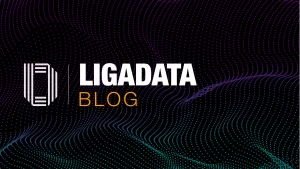With the sheer volume and variety of subscriber interactions, telecom operators face the challenge of accurately estimating the long-term revenue potential of each subscriber. Understanding and engaging with subscribers is not just a business tactic; it’s a strategic imperative. “Subscriber Insights” enables Communications Service Providers (CSPs) to dive deep into their customer base, prioritize high lifetime-value subscribers, anticipate churn, optimize engagement, and craft services that boost both satisfaction and retention. This is where Customer Lifetime Value (CLV) analysis comes into play.
Challenges in Estimating CLV
A primary challenge in the telecom industry is to accurately estimate the expected revenue contribution of a subscriber over their entire lifetime as a customer. This involves analyzing a myriad of factors including:
- Subscriber Usage Patterns: Understanding how subscribers use services like calling, SMS, and data.
- Service Subscriptions: Tracking various service plans and subscriptions.
- Revenue Contributions: Monitoring financial interactions like billing and payments.
- Purchase Behaviors: Observing trends in buying additional services or upgrades.
- Historical Interactions: Examining past engagement, including customer service contacts.
The Solution: A Holistic Approach
Telecom operators are now able to leverage advanced analytics and machine learning (ML) techniques to enable a game changing CLV Calculator.
CLV Calculator: A Game Changer
The CLV Calculator is provided as a pre-built app component within the telecom data fabric. It leverages advanced analytics to estimate the potential revenue generated by a subscriber. It considers the totality of subscriber interactions and transactions, to quantify the long-term value of subscribers, based on their engagement and preferences, integrating data from call detail records, app usage logs, subscription information, service usage patterns, transaction history, customer service interactions, demographic and behavioral data, usage analytics, marketing campaign data, and churn and retention data.
Data Sources: The Backbone of CLV Analysis
For accurate CLV analysis, a range of data sources is indispensable:
- Customer Interaction Data: Including call detail records (CDRs) and app usage logs.
- Subscription and Service Usage Data: Essential for understanding potential revenue contributions.
- Transaction History: Billing data and transaction history are critical for financial insights.
- Customer Engagement Data: Customer service interactions shed light on satisfaction and loyalty.
- Demographic and Behavioral Data: Helps in segmenting subscribers and tailoring offerings.
- Usage Analytics: Network usage patterns and marketing campaign data are key to understanding service utilization and campaign effectiveness.
- Churn and Retention Data: Historical churn data and records of retention efforts provide insights into subscriber attrition and retention strategies.
Business Use Cases and Value
Gaining access to a fundamental subscriber metric such as the Customer Lifetime Value enables the provider to make data-driven decisions for their high-value customers to improve the overall customer experience and engagement, delivering personalized and seamless experiences to customers throughout their lifecycle. It enables high customer-value segment prioritization, customized retention strategies, and comprehensive churn impact evaluation.
1. Prioritizing High-Value Subscribers
- Strategic Engagement: Identifying subscribers with high CLV allows for focused and personalized engagement strategies, enhancing retention and loyalty.
2. Optimizing Marketing Campaigns
- Targeted Investments: By understanding subscriber segments with high CLV, marketing efforts can be more effectively tailored, maximizing long-term revenue potential.
3. Enhancing Churn Prevention
- Financial Impact Analysis: Integrating CLV with churn prediction models helps in identifying high-risk subscribers and the potential revenue loss associated with their churn.
4. Segmentation and Targeting
- Micro-Segment Creation: CLV analysis assists in crafting targeted offers and services based on subscribers’ long-term value, focusing retention efforts on subscribers with higher long-term value.
5. Effective Resource Allocation
- Balancing Revenue and Costs: Operators can make informed decisions about where to invest resources by considering both potential revenue and the impact on satisfying and retaining their highest lifetime value subscribers.
Conclusion: Steering Towards a Subscriber-Centric Future
In the increasingly competitive telecom landscape, the ability to accurately calculate and leverage Customer Lifetime Value is not just an advantage – it’s a necessity. Subscriber Insights and CLV Analysis are not just tools; they are fundamental pillars in the journey towards a more subscriber-centric telecom industry. By adopting a data-driven approach, telecom operators can make strategic decisions that not only enhance immediate revenue but also ensure long-term profitability and customer satisfaction. Advanced analytics and ML models, as embodied in engines like the CLV Calculator, are revolutionizing how telecom operators understand and interact with their subscribers, paving the way for smarter, more effective business strategies.


